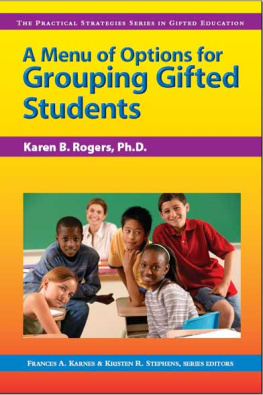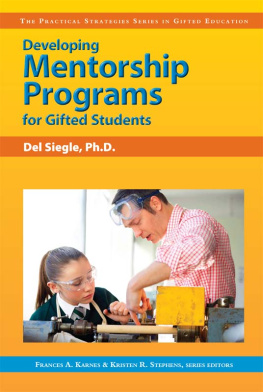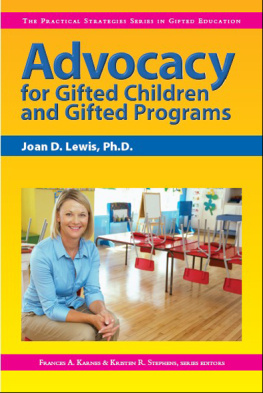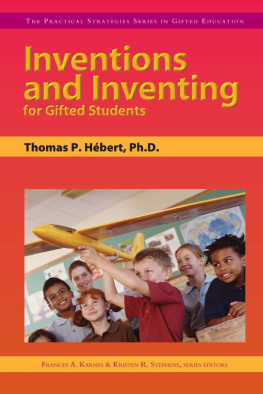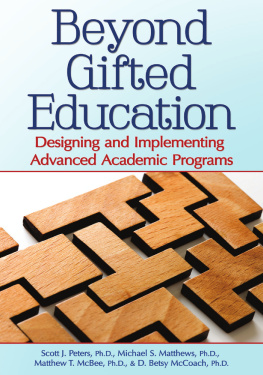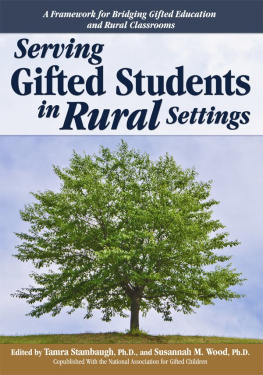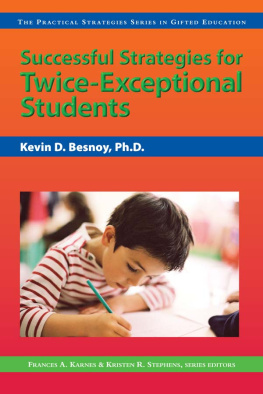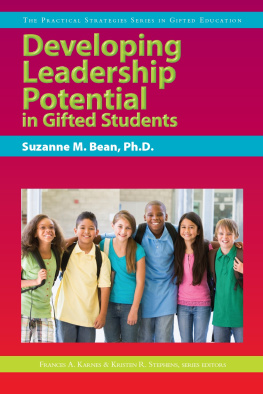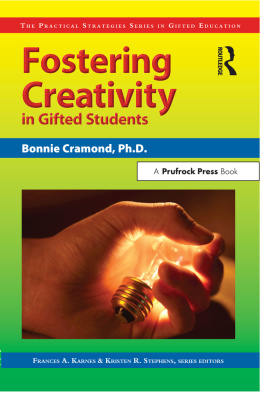For a current listing of available guides within the series, please contact Prufrock Press at (800) 998-2208 or visit http://www.prufrock.com.
Introduction
In the past 15 years, the issues surrounding ability grouping have been thoroughly, and at times, heatedly, discussed and debated. In a recent, exhaustive search of the research, it was found that much of what we already knew about ability and performance grouping for gifted children has not changed. What has changed, however, is that a greater number of grouping types have been researched. Newer studies have looked more closely at effects other than achievement on students, so a better understanding regarding the social and emotional impact of certain forms of grouping on students is emerging. The purpose of this guide is to bring readers up-to-date on this research as it pertains to gifted learners, so they can have confidence when making decisions regarding grouping gifted learners.
This publication is composed of two distinct sections. The first identifies and defines the four forms of grouping gifted children by ability and the six forms of grouping based on performance. Research from the last 10 years is discussed for each of these grouping options. The second section of this guide focuses on how to choose the right form of grouping and how to implement it in a school setting, while considering administrative, teaching, and curricular factors. Two tables have been included to help understand the different roles a regular classroom teacher and a gifted resource teacher might play within each grouping option and to help implement curricula and instructional strategies most appropriate for each form of grouping. In addition, a list of select resources that might be helpful in setting up and implementing each grouping option has also been included.
In general, almost any form of grouping provides an academic or achievement gain to gifted learners with fairly positive social and emotional gains, as well. Grouping tends to be the least restrictive environment for gifted learners, and the most effective and efficient means for schools to provide more challenging coursework, giving these children access to advanced content and providing them with a peer group.
Grouping is a vehicle educators can use to allow gifted learners access to learning at the level and complexity necessary. It is probably more important to spend time thinking about what these learners will actually do once they are grouped, than what form of grouping is to be selected.
Can You Name the Grouping Options?
For each of the italicized options in the two case studies below, see if you can identify the grouping option. Space has been provided for your answers beneath each case study. The correct answers can be found at the end of this publication (see pp. 4344).
Case Study 1: Susanna
Susanna was reading well before she entered kindergarten. Her kindergarten teacher sent her to the first grades top reading class for reading instruction, where she held her own with her older peers. In first through third grade, Susanna was part of the top reading group at each grade level. In third grade, she was also invited to join the Challenge resource room pull-out program in which research skills, critical thinking, and creative productivity were taught to the brightest youngsters by a gifted and talented resource teacher. In grades four through six, Susanna was allowed to move beyond grade level in both reading and mathematics. She completed sixth grade work in fifth grade, and she worked on middle school materials on her own throughout fifth and sixth grade. In middle school, Susanna was provided with trimesters of gifted seminar classes in the humanities and was placed in the accelerated mathematics classes. She completed algebra I and II while still in middle school. In her first 2 years of high school, Susanna was placed in accelerated mathematics classes and in honors English, social studies, and science classes. Her junior year she took calculus within the Advanced Placement (AP) program. She also took AP classes in English, social studies, and science her final two years of high school. What were Susannas grouping options?
First grades top reading class in kindergarten
____________________________________________________________________
Top reading group at each grade level
____________________________________________________________________
Resource room pull-out program
____________________________________________________________________
Move beyond grade level in both reading and mathematics
____________________________________________________________________
On her own
____________________________________________________________________
Gifted seminar classes
____________________________________________________________________
Accelerated mathematics classes

